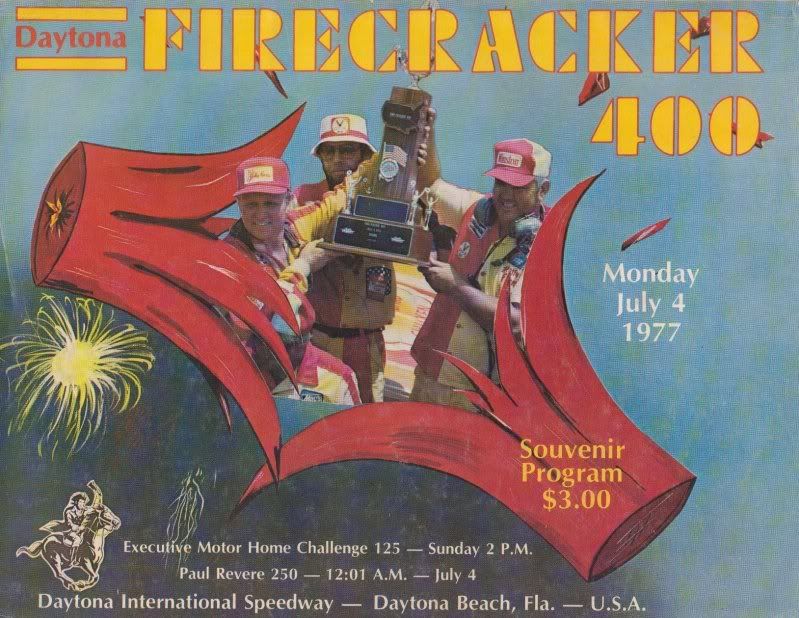 |
| Source: Motor Racing Programme Covers |
Richard's father, retired driver, and Petty Enterprises founder/co-owner Lee Petty was the race's grand marshal. Generally known as a curmudgeonly, tough ol' bird, Lee was apparently quite the socialite a couple of nights before the race.
The Pole Winner
Neil Bonnett won the pole in his Harry Hyde-prepared Dodge Charger. The duo were making their debut start under the team's new ownership flag of Jim Stacy Racing. The team had previously been owned by Nord Krauskopf and fielded red #71 Dodges with sponsorship by K&K Insurance for such notable drivers as Bobby Isaac, Buddy Baker, Dave Marcis, and Bonnett. By the mid-70s, however, Krauskopf began throttling back his support of the team. Hyde and Bonnett welcomed the change in ownership, and the newly renumbered 5 team had a good bit of success the rest of 1977.
 |
| Photo courtesy of Ray Lamm |
By mid-1978, Stacy all but disappeared. Unexpectedly, he returned in 1981 to buy Rod Osterlund's championship team driven by Dale Earnhardt - a good friend of Bonnett. Shortly after the ownership change, Earnhardt joined the struggling team of Richard Childress - and I think we can agree the two of them tasted a bit of success. Stacy's ego raged in 1982 and 1983 by sponsoring upwards of 5 to 6 cars per race with not much more than his last name (or his generic-sounding company names) on the rear quarter panels. But as 1983 ended, once again Stacy disappeared - never to resurface in the sport again. He was truly an odd chapter in NASCAR's history book.
The Ladies
Three women emerged as the dominant storyline of the race. Not since the formative years of NASCAR had three women started a race in NASCAR's premier series. Janet Guthrie had already made headlines with her ground-breaking starts in the Indianapolis 500, Daytona 500, and World 600.
 |
| Credit to and courtesy of Brian Cleary / bcpix.com |
Papa Lee Petty - winner of the first Daytona - 500 met with the three drivers before the race.
The Race
The first 50 laps were very competitive with a lot of lead changes. The longest consecutive laps-led streak during the first third of the race was 7 laps. Then around lap 50, Petty found his groove and stayed on point for the next third of the race.
The 400 then unfolded almost as if it were two 200-mile events. Not quite half the race was completed before typical Florida showers interrupted the action for two hours.
 |
Credit to and courtesy of Brian Cleary / bcpix.com
|
Two years earlier in the 1975 Firecracker 400, the King worked with his crew all day to adjust the car. With less than 20 laps to go, Petty was able to catch Buddy Baker and pull away for the win. In the 1977 race, the #43 Dodge was again able to catch and pass the leader - Darrell Waltrip - with 19 laps to go. The big difference between 1975 and 1977, however, was the #43 STP Charger was the dominant car the final two-thirds of the race - before and after the rain.
The Victory
Once Petty cleared Waltrip, he cruised to the win by a comfortable margin over Waltrip's #88 Gatorade Chevy.
In victory lane, the King was able to celebrate the win with daughter Rebecca.
 |
| TMC Archives |
 |
Source: Motor Racing Programme Covers
|
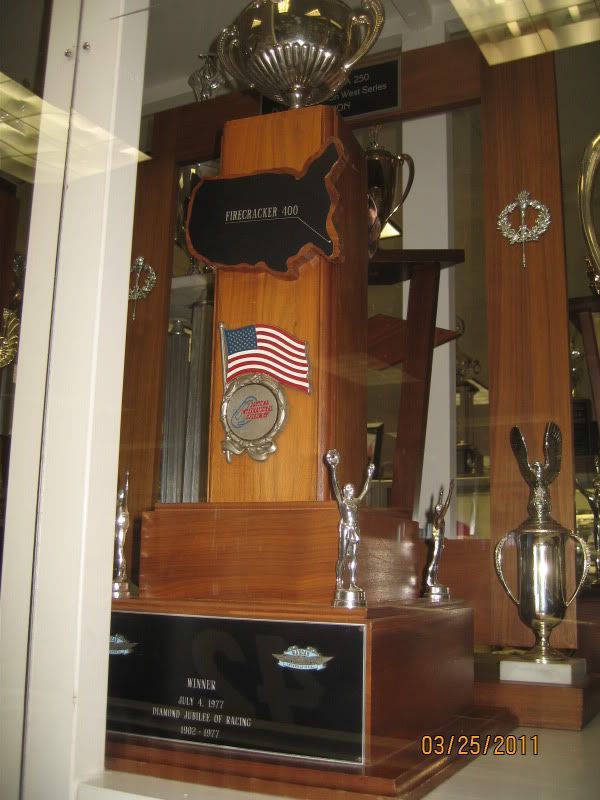
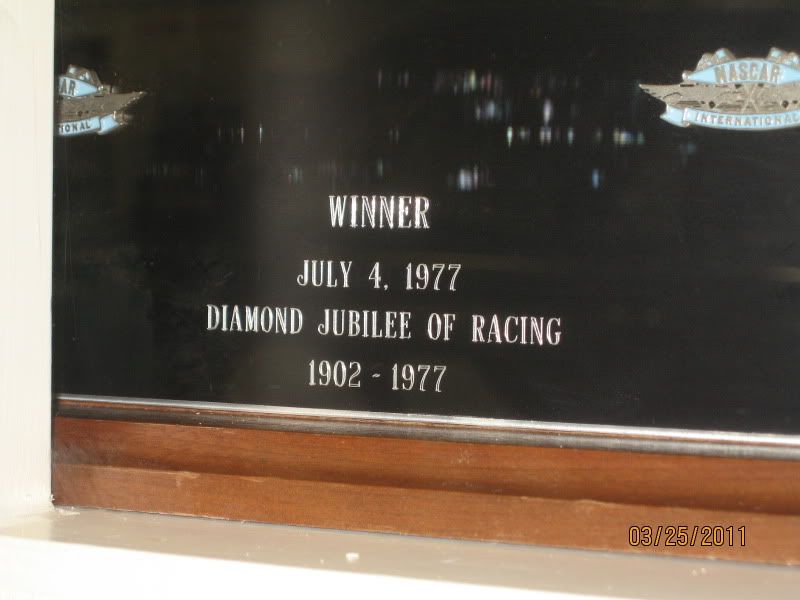
 |
| Article courtesy of Jerry Bushmire |

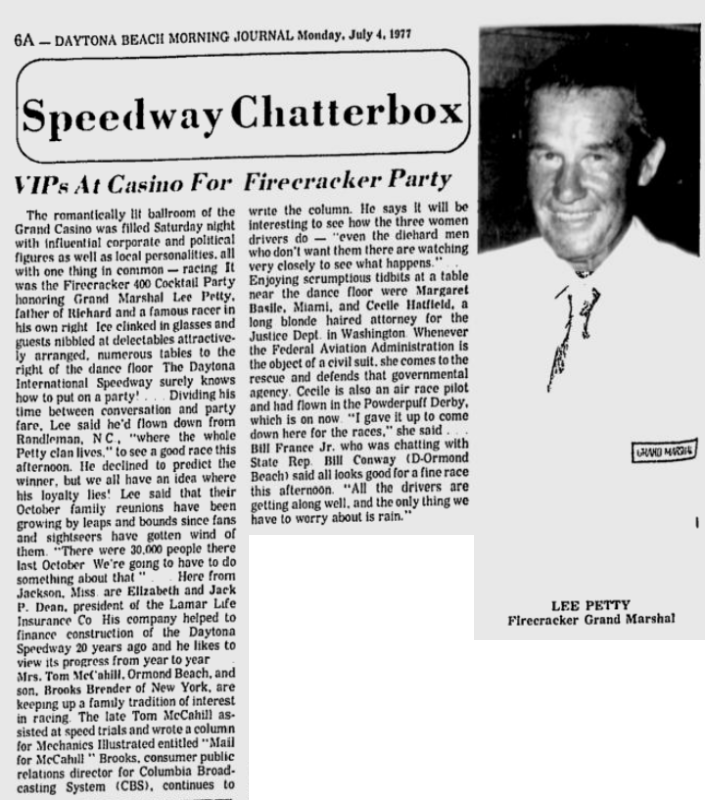

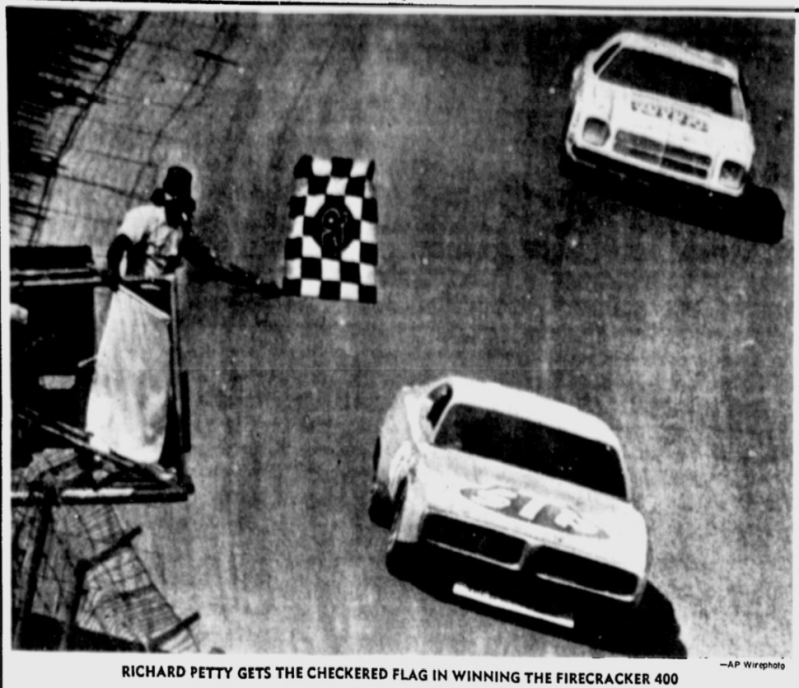

No comments:
Post a Comment